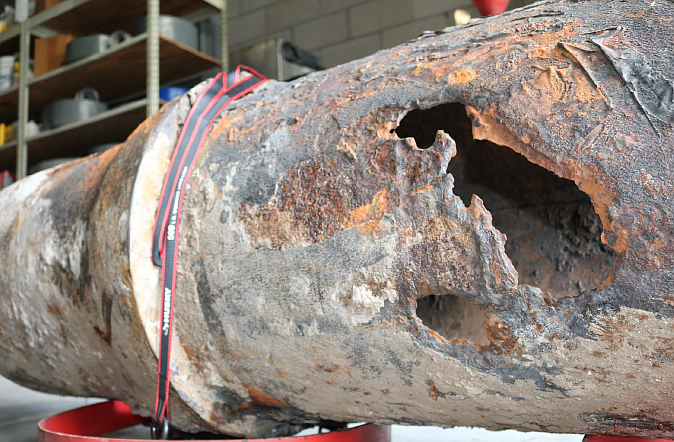- April 8, 2025
-
-
Loading

Loading

The contractor hired by Longboat Key has determined that a buried log rubbing for decades against the underground pipeline likely initiated the corrosion that led to June’s sewage break in mainland Manatee County.
Last week, the town released the 596-page report by Berkeley Research Group.
The report indicates that once excavation workers were at the scene of the spill, about 350 feet from the Sarasota Bay shoreline on June 30, pumps cleared standing water from around the pipe, allowing a clear view of the break.
“At approximately 1315, the pumps were able to expose the damaged section of pipe to the point that I observed a log or root lying perpendicular (across) at a slight angle under the damaged section,'' the report quotes an eyewitness as reporting. “The log was approximately 6 to 8 [inches] around and stretched beyond the width of the pipe. Water was pouring out at the approximate position of the log or root.”
The report postulates that for years after construction, the log or root "was acting as a fulcrum under the pipe'' and "likely abraded the exterior pipe coating, inducing corrosion.''
“Given the excessively corroded pipe wall condition at the breach location, it is likely that the pipe experienced a force, such as a surge or purge pressure, that instantly caused the weakened pipe section to break. In that instant, the pipe crushed down onto the log, which partially blocked the opening,'' the report says, adding the shape of the hole matched the shape of the log.
The report also states the break took place in a section of pipe .500 of an inch thick, and that corrosion in the years since its installation had degraded the thickness by half. The report says the root or log likely began wearing away at the pipe beginning shortly after installation, but not to the point to precipitate corrosion until about 18 years ago.
In a previous report, BRG estimated the final leak spilled about 14.7 million gallons between June 17-30. The town forwarded a copy of BRG’s report to the Florida Department of Environmental Protection. Longboat Key staff asked the state to use BRG’s estimate in its proposed consent order worksheet.
The state estimated about 17 million gallons of sewage spilled.
In August, third-party contractor Environmental Science Associates finished its water-sample testing in the Sarasota Bay waters after the sewage break, determining that the environmental effect was low.
The FDEP is seeking $242,652.50 in civil penalties for the break under a proposed consent order. The town can also choose to offset the amount by implementing an in-kind penalty project, subject to FDEP approval.
Town commissioners have until Jan. 22 to decide what to do with the proposed consent order. Town Attorney Maggie Mooney has requested for commissioners and attorneys to hold a private meeting on the morning of Jan. 5, 2021, to come to a decision.
BRG retained the engineering firm Venture Engineering and Construction for modeling the leak volume.
Greeley and Hansen’s report on Aug. 14, 2017, marked the last inspection on the pipe. The force main was built in 1973. At that time, the pipe was given years of estimated life remaining.
Longboat Key is in the process of advancing its redundant pipe project, which has an estimated cost of $16 million. The project would first duplicate the pipeline on the mainland side and eventually duplicate the underwater portion, which runs from Longboat Key, under the bed of Sarasota Bay and emerging in mainland Manatee County on the way to the treatment plant.
The sewage break has already cost the town $344,027.70 as of Dec. 23, according to Town Finance Director Sue Smith.
After collecting sewage from the town's system, smaller pipes converge at a pumping station on Gulf Bay Road. From there, the town's untreated sewage flows through a 20-inch diameter iron pipe under the bed of Sarasota Bay. It terminates at a treatment facility north of Conquistador Parkway in Bradenton.